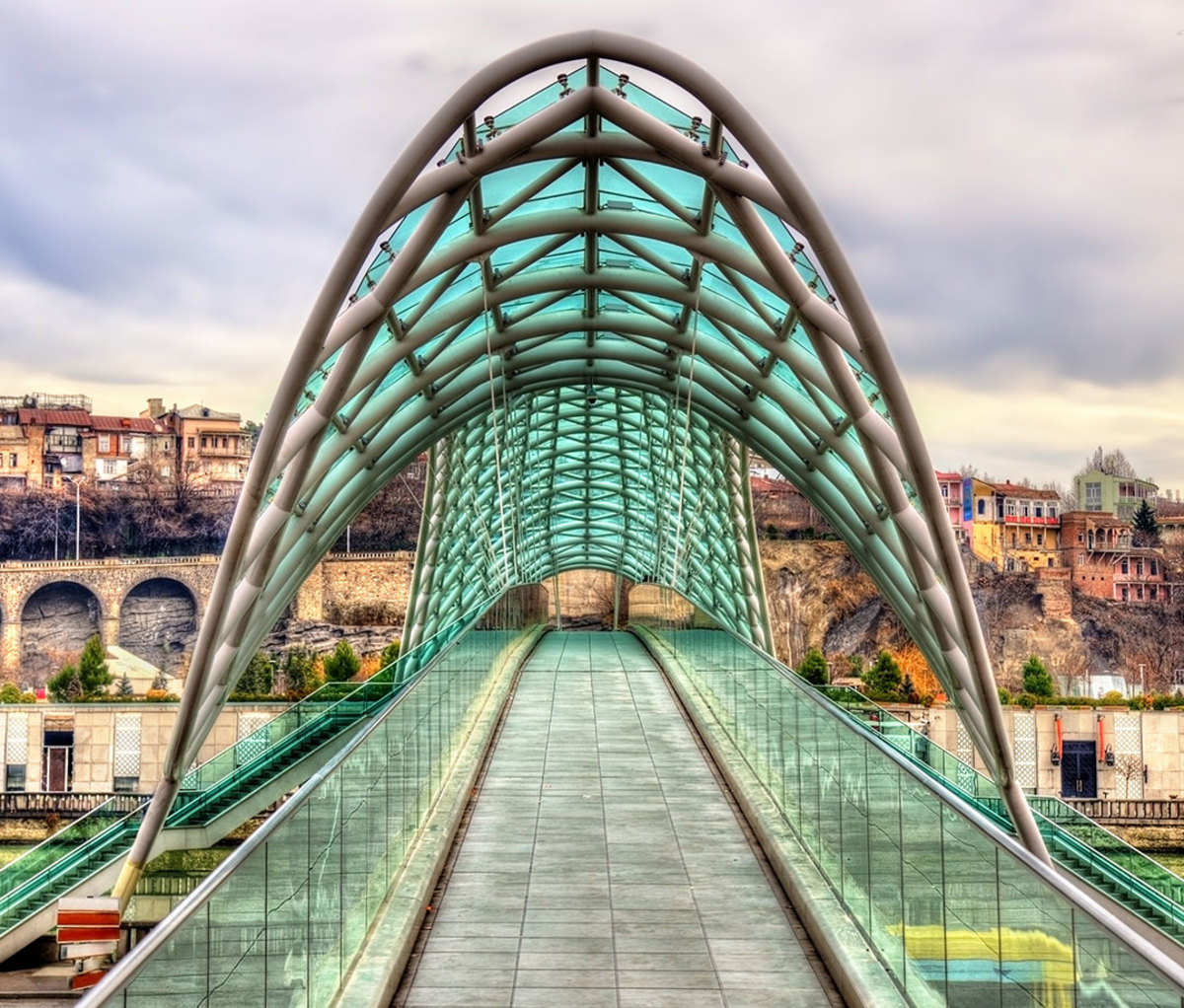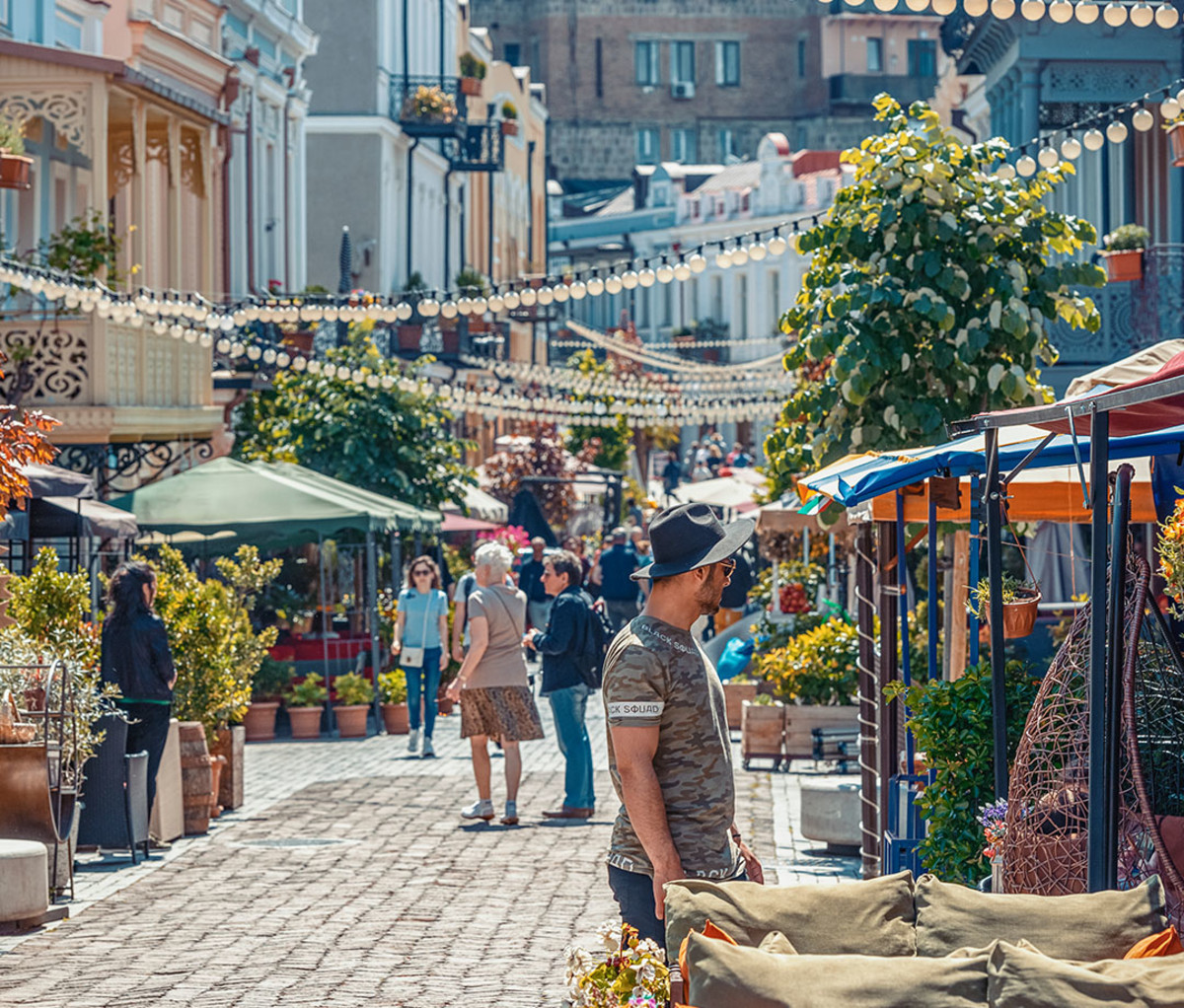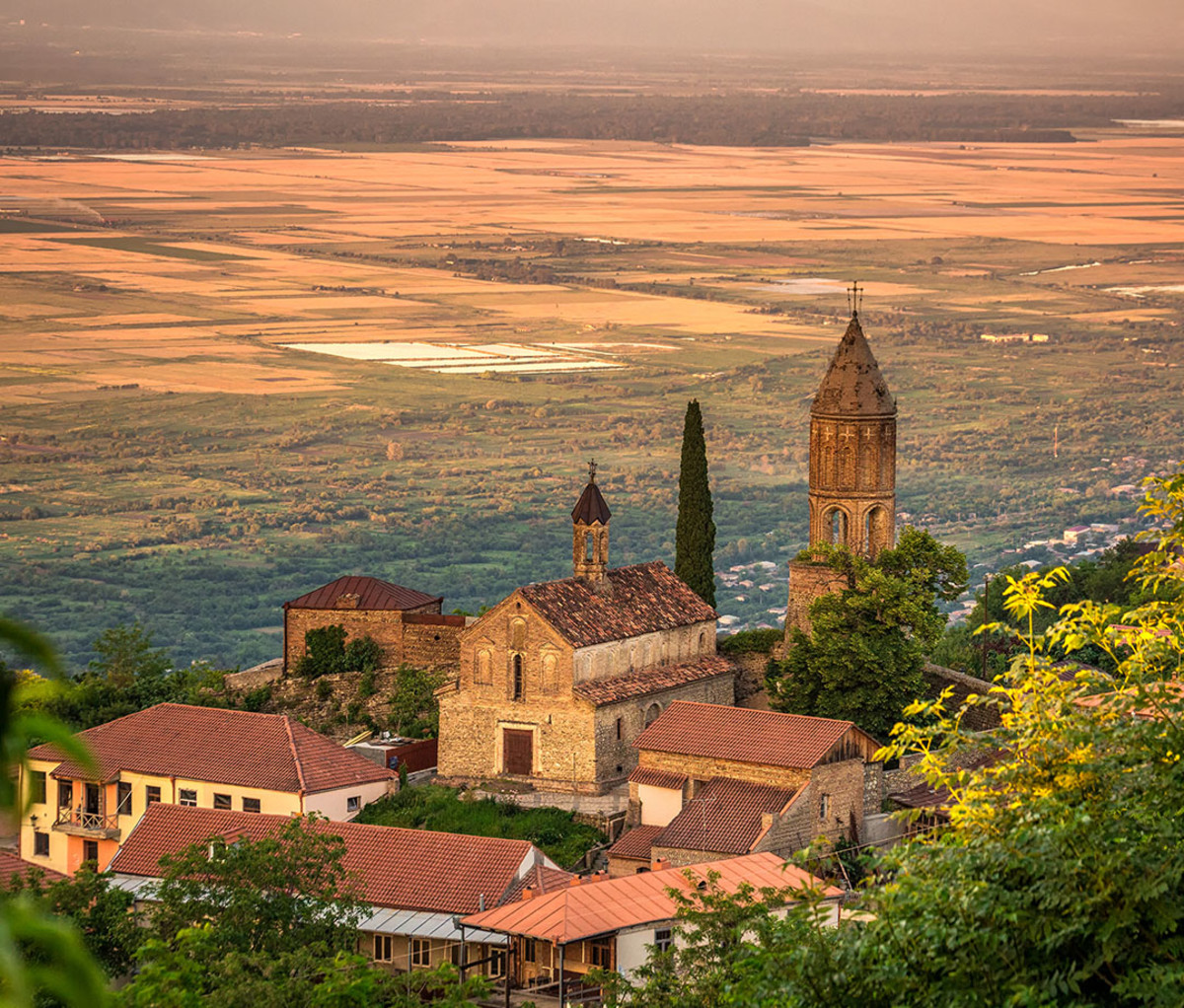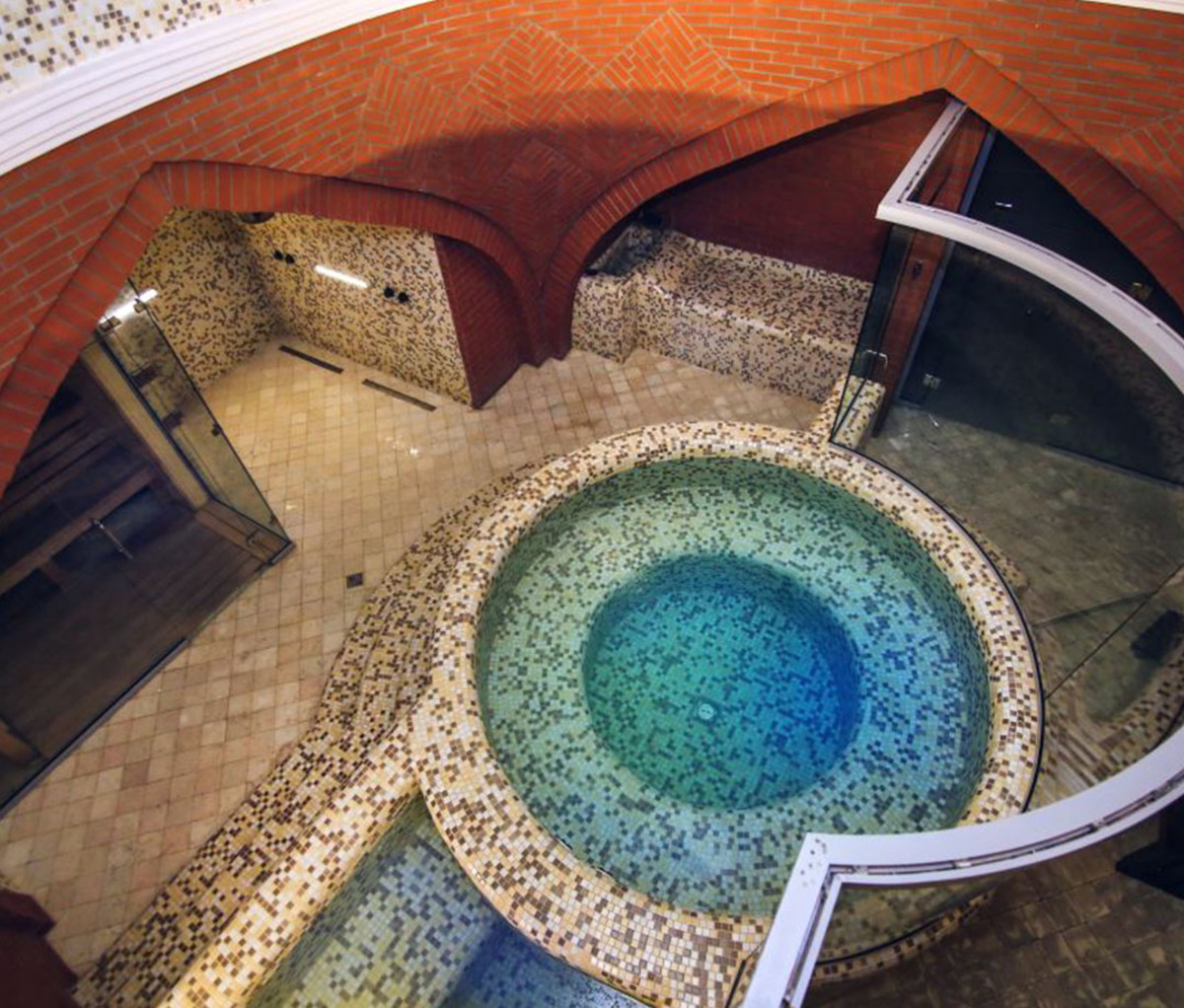There are three questions you’ll hear repeatedly as you plan your trip to Tbilisi, Georgia.
The first: “Is that near Atlanta?” To which you’ll respond: “Georgia the country, not the state.”
The second: “Oh. Where is that exactly?” After which you’ll say: “In Europe. But removed from most of it. Northeast of Turkey. South of Russia.”
And finally: “What is there to do in Tbilisi?”
And that’s why you’re here, too. You’ve heard Tbilisi compared to Berlin or even Belgrade, but Georgia is nothing like Germany—maybe a little more like Serbia, though.
Yes, it’s far away, which is why you’ll probably spend more than four days in Georgia in total—hiking through the Caucasus Mountains and slurping qvevri wine brewed underground in clay jars. A lot of fellow travelers you’ll meet will be somewhere in the middle of a month-long stay, given all the recreation across the small country. But four days based in Tbilisi is a good foundation for this more epic escape, and an easy add-on to a Euro trip or vacation in Turkey.

Why Visit Tbilisi?
A city of high contrasts, Tbilisi keeps your senses alert: Juxtaposed against 4th-century fortresses are Art Nouveau and Byzantine architecture, modern ruins, and the recent addition of numerous head-scratching structures—think metal tube-like buildings, dancing glass bridges, and Jenga-style banks. Around each corner, you’re met with verdant, cafe-lined alleys; Orthodox churches old and new; and colorful street art. The food is heavy, but you’ll never slow given the bounty of dough, cheese, meat, and spices. (A pre-beach vacation this is not.) Tbilisi is also extremely affordable, attracting young creatives who’ve made it one of the world’s most bustling hipster capitals. It has an underground nightlife to be reckoned with—and its best hotels (and even hostels) are thoughtfully curated gathering spaces where you can hear live music, shop local brands, or meet friends for a pint. So to bottle it all up: Your long weekend will run an entire spectrum of sights, sounds, tastes, and more. Georgians are extremely hospitable, and Tbilisi has a cosmopolitan current running through it, despite its isolation from all the other cultural capitals you may prioritize ahead of it—until now.
How to Get to Tbilisi
The bad news is that you can’t yet find a direct flight from the U.S. to Tbilisi. The good news is that a number of carriers can get you there with one connection if you start in a major U.S. hub like D.C., Chicago, or NYC, and none of those connections will route you too far out of the way. Look in particular for flights with Turkish Airlines, Emirates Airlines, Qatar Airways, AirFrance, and Lufthansa.
Where to Stay
Our top vote goes overwhelmingly to Stamba Hotel, in the Bohemian neighborhood of Vera. Your jaw will hit the floor with this place, and your wallet won’t even know the difference. They gutted an old printing house and have converted it into one of Tbilisi’s most treasured melting pots and meeting grounds. Your first impression is a five-floor-high atrium, beautifully exposing the framework of the printing house and luring you either into the lobby library (where you can check out a vinyl for your room) or the dining wing. In that dining and cafe sprawl alone, you’ll see Georgians of all ages and expressions chatting with friends, as well as travelers from around the globe. They’re working on laptops at Cafe Stamba; sipping cocktails at The Pink Bar; or relaxing in the luscious courtyard overlooking the vertical Space Farm, from which Stamba sources most of its herbs, fruits, and vegetables (as part of its commitment to sustainability). On top of all that are the colorful, decked-out, brick-walled, light-soaked rooms, all of which feel more like an expertly designed home than a hotel. There’s no streamlining here; Stamba is creative, eclectic, original, and best of all, inexpensive. We wouldn’t stay anywhere else. (That said, consider the other Adjara Group hotels and hostels as alternatives, as the group is making huge progress in Tbilisi’s rise as a cosmopolitan capital. You’ll without question visit Fabrika Hostel as a tourist destination in the first place, so if budget is of any concern, you can score a private double room and bathroom there for all of $60 per night.

Day 1: Explore Old Town
Give yourself a base layer of history on Day 1, with a walking tour through Old Town (you can finish with a glass of wine, too, if you fancy.) Among the stops, you’ll visit Tbilisi’s oldest church, the sixth-century Orthodox Anchiskhati Basilica. It makes the 13th-century churches Sioni and Metekhi look like freshmen, and you’ll get to tour those as well, in addition to mosques, Armenian churches, and synagogues. It’s a showcase of Georgia’s cultural and religious crossroads. You’ll get a panorama after hiking up to the 4th-century Narikala Fortress and meander the Shardeni nightlife quarter as well as the bustling Freedom Square. You’ll note the sulfur bathhouses (don’t worry; you’ll visit them later) and cross the decade-old glass Bridge of Peace. Given the manageable three to four hours these tours require, it’s a perfect bite-sized way to learn about Georgian history while getting your bearings.

Day 2: Visit Hipster Haunts
On your day of Old Town exploration, you’ll probably wonder “what the hell is all this hype about Tbilisi being a young, cool cultural hub?” That’s what you’ll discover on Day 2, and you’re off the leash of any tour guides for this day. You’ll primarily explore the neighboring Vorontsovi and Vera hoods, north of Old Town, which are separated by the Mtkvari (Kura) River.
Plan some time to relax behind Fabrika Hostel—among the city’s young creative class. It’s not just a backpacker scene, either; you’ll see that this is a genuine gathering place for locals and visitors alike. You can browse the shops that line this courtyard, too, which sell locally made clothing, art, and more. The rest of your day should be spent afoot turning down every alley, bouncing between ruins (which in five to 10 years will probably be bustling watering holes), and dropping into newly opened cafes, bars, galleries, and shops. You’ll get a good taste for Tbilisi’s old-new juxtaposition on this day, especially by comparison to your Day 1 history walk.
If you’re up for a late night out, then you’re in the right city. Check the schedules at Bassiani (one of the world’s most famous clubs, which is in an old swimming pool for techno and house) or Mtkvarze (disco and house). They should have something that suits you—or at the very least, something you can’t find back home.

Day 3: Take a Tour Through Wine Country
You’ll notice the many options for day trips from Tbilisi on sites like Get Your Guide, which take you through the mountains, to the lakes, and even into Armenia. You can’t go wrong with any of them, though you should also save most of those things for more extended visits and overnights, since you flew all this way to savor the experience. That said, your best option for a day trip from Georgia is a Kakheti region wine tour, with group tour and private driver options available to you. We say splurge on the private one—the private lunch with local hosts and the one-on-one (or two or three) charm you’ll experience from each host will be inimitable on bigger tours.
You’ll spend the day learning about qvevri practices, whereby winemakers ferment their product underground in clay pots. (This is the famous orange Georgian wine you’ve hopefully heard about. It’s orange because the producers include the grape skin in the fermentation process.) You’ll have a Caucasus Mountain backdrop, will visit wineries small enough to fit inside a family home, and large enough to house the second-longest wine tunnel in the world. (That’s the Khareba Winery, by the way.) This is a full day, and not one you’ll want to spend driving around on your own (since you’ll probably be buzzed).

Day 4: Soak in Sulfur
You’ve just got half the day to spend, so make it a relaxing cap on the weekend of thorough exploration. Book ahead at any of the thermal baths in town, either private bathing rooms or joint ones with your companion. You can even schedule massages in each room—and you should. (Though it’ll probably be some giant, furrowed Georgian man doing the scrubbing, just take note.) There are a few baths in close proximity to one another, right on the brim of Old Town. Chreli Abano, Abanotubani, and Gulo’s are the agreed-upon favorites. Budget about two hours for this, or less if you’re tight on time. Just don’t forget to book ahead, because demand is high. (Your hotel will happily call on your behalf.)

Five Restaurants to Try in Tbilisi
Shavi Lomi: Modern Georgian fare, hidden behind a street-art gate. You won’t even know you passed this luscious, low-lit oasis from the street. But don’t miss it.
Maspindzelo: Traditional fare, but ample. Order slowly, because those dishes are bigger and more filling than you think.
Machakhela: Traditional Georgian pastries, puffed to perfection. (And smothered in cheese, meat, eggs, and the like.)
Strada Marjanishvili: Serving all courses, this trio of fine-dining restaurants blends Asian and American traditions.
g.Vino Wine Bar: Two locations offering the best in Georgian wine (paired with local fare, but of course).
from Men's Journal https://ift.tt/30oXc4s
 #stambahotel
#stambahotel Hotel
Hotel
No comments:
Post a Comment